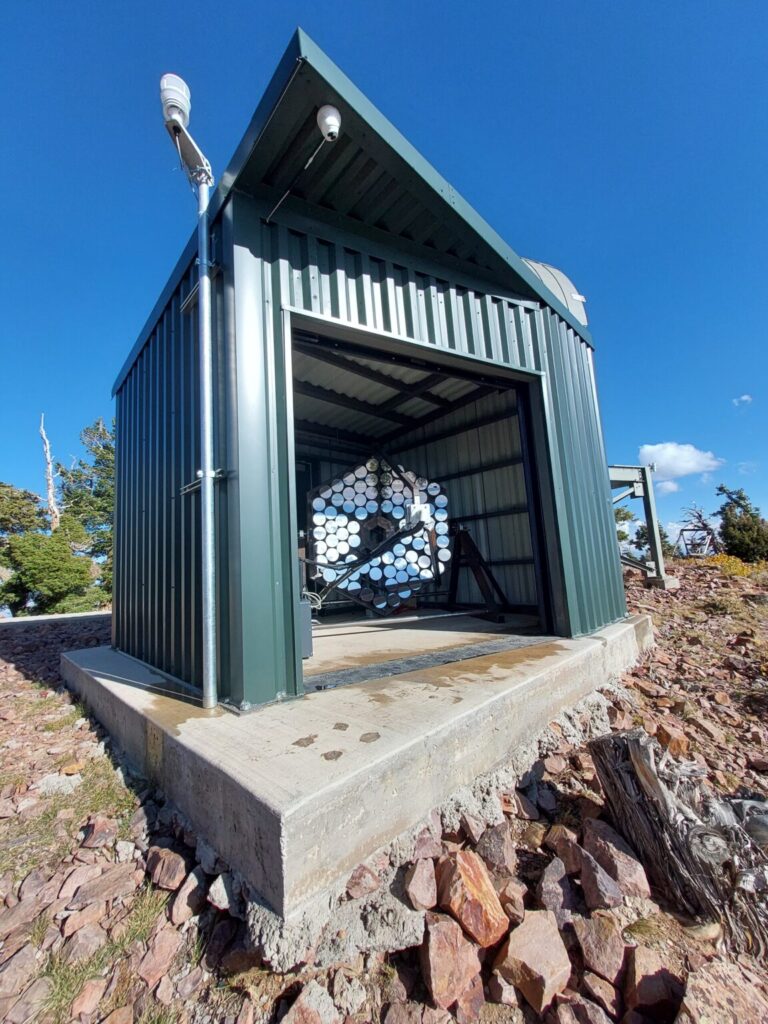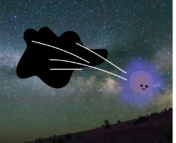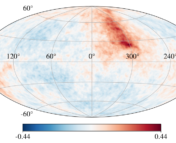Paper Title: Trinity: An Imaging Air Cherenkov Telescope to Search for Ultra-High-Energy Neutrinos
Authors: Anthony M. Brown, Mahdi Bagheri, Michele Doro, Eliza Gazda, Dave Kieda, Chaoxian Lin, Yasar Onel, Nepomuk Otte, Ignacio Taboada, Andrew Wang
First Author’s Institution: Department of Physics, Durham University, Durham, United Kingdom
Status: Published in Proceedings of the 37th International Cosmic Ray Conference (ICRC 2021) [open access]
Neutrinos, the Introverts of the Standard Model
Neutrinos are some of the most abundant particles in the universe, second only to photons, yet they remain one of the particles we know the least about. Unlike photons, neutrinos are incredibly antisocial. As neutral particles with very little mass, it is extremely unlikely for a neutrino to interact with any matter that it passes through. This makes them excellent candidates as messengers for astrophysical events because they are easily able to pass through any matter in their way, like the dust and gas residing within and between galaxies. However, this also means that it’s difficult to detect them because they can just as easily pass through Earth when they arrive. Most detectors get around this by having large detector volumes to increase the likelihood of a neutrino interacting within the detector, such as IceCube and Super-Kamiokande.
Some of the highest-energy neutrinos (fittingly called “ultra-high-energy”, or UHE) can provide excellent information about high-energy astrophysical processes like supernovae and active galactic nuclei. Using UHE neutrinos, we can probe the nuclear reactions that create high-energy particles in these “cosmic accelerators,” and we can search for likely sources of cosmic rays. The only problem is that higher energy neutrinos are much rarer than lower energy neutrinos, meaning that we need detectors that can observe enormous volumes to detect a significant number of UHE neutrinos. To accomplish this, scientists have proposed Trinity, a new detector comprised of an array of three telescopes that will search the atmosphere for signals of neutrinos passing through Earth.
Scratching the Surface
All neutrino detectors operate under the same basic principle. When a neutrino interacts with matter, it can produce a particle moving very close to the speed of light. When this happens in a transparent medium (ice, water, air, etc.), the particle can be moving faster than the speed of light in that medium. This creates an effect analogous to a sonic boom (check out this cool animation), but with light waves instead of sound waves. The light waves produced in this fashion are referred to as Cherenkov radiation, which have wavelengths in the blue, violet, and ultraviolet areas of the electromagnetic spectrum. Cherenkov radiation is what gives nuclear reactors their characteristic blue glow!

How the neutrinos interact is where Trinity differs from other detectors. Trinity uses a novel detection method called the Earth skimming technique, shown in Figure 1. When some UHE neutrinos pass into Earth’s crust, they will interact and produce a fast-moving particle called a tau (τ), which is like a heavy but unstable cousin of the electron. This τ can survive long enough to exit Earth’s crust and decay in the atmosphere, which is where the Cherenkov radiation is produced. The Cherenkov photons typically have a wavelength of 300-400 nanometers, putting them in the blue to UV range of the electromagnetic spectrum, through Trinity expects to detect redder photons (wavelengths between 600-700 nanometers) from distant events because blue light scatters more easily in the atmosphere, making it less likely to travel the long distance to the detector. (This wavelength dependence is also why the sky is blue, and why sunsets and lunar eclipses are red!) By placing Trinity high on a mountain, scientists can observe the Cherenkov radiation from τ’s produced from high-energy neutrinos skimming through Earth’s surface.
Detection Capabilities

Trinity will be capable of measuring UHE neutrinos at the PeV scale (1015 eV, or 106 GeV) ‒ all the way down to 1 PeV ‒ allowing them to fill in the gap between TeV-scale measurements from detectors like IceCube and EeV-scale measurements from detectors like Auger. This region of Trinity‘s sensitivity also overlaps with astrophysical neutrino measurements from IceCube (see Figure 2). This has two main consequences:
- Trinity is guaranteed to measure astrophysical neutrinos in this energy range (we know they exist because they’ve been detected by IceCube);
- Trinity and IceCube’s combined performance can lead to improved measurements.
Additionally, Trinity’s sensitivity at lower energies should result in a larger number of neutrino detections than what other observatories see in this energy range. This means Trinity can provide important measurements for the UHE neutrino spectrum, which is not well-constrained with measurements from other detectors.
The other primary benefit of Trinity is scalability. Since each telescope can operate independently and does not require a significant amount of funding or materials to
construct, it is very feasible to expand the planned Trinity project to more than three telescopes.
Demonstrating Feasibility

As a precursor to the full Trinity array of telescopes, the Trinity Demonstrator is a smaller-scale telescope that serves as a proof-of-concept for the full detector. An image of the Demonstrator is shown in Figure 3. Positioned atop Frisco Peak, Utah at an elevation of 9,500 ft., the Demonstrator recently had first light on October 3rd, 2023. The Demonstrator allows the Trinity Collaboration to start collecting data and to set up pipelines for data processing and data analysis. Having these pipelines in place means that the Trinity Collaboration can immediately begin analyzing some of the highest-energy particles in the universe at full capacity when the full Trinity telescope array comes online. The Trinity Collaboration plans to conduct their initial assessment of the Demonstrator over its first year of operations, which they will use to inform development and construction of the full-sized Trinity telescopes. Their current timeline estimates deployment of the Trinity array in 2026 or 2027.
Astrobite edited by Emma Clarke and Nathalie Korhonen Cuestas
Featured image credit: Figure 1 from today’s paper.




